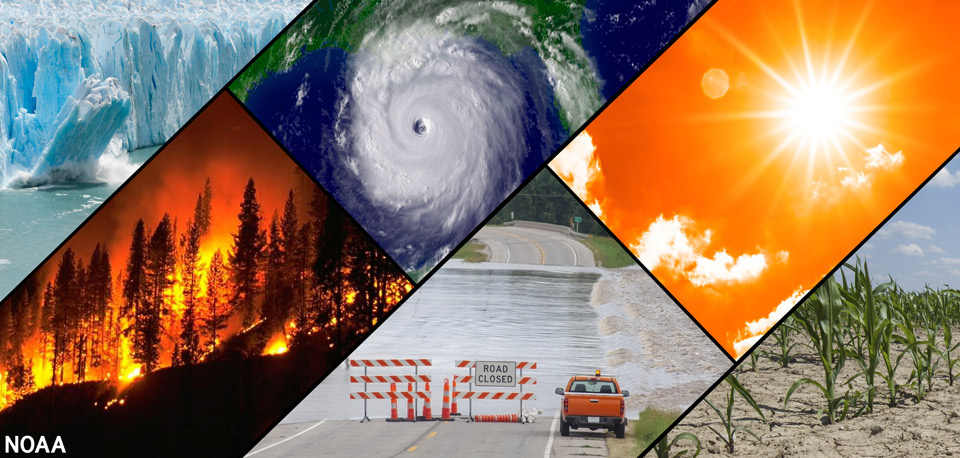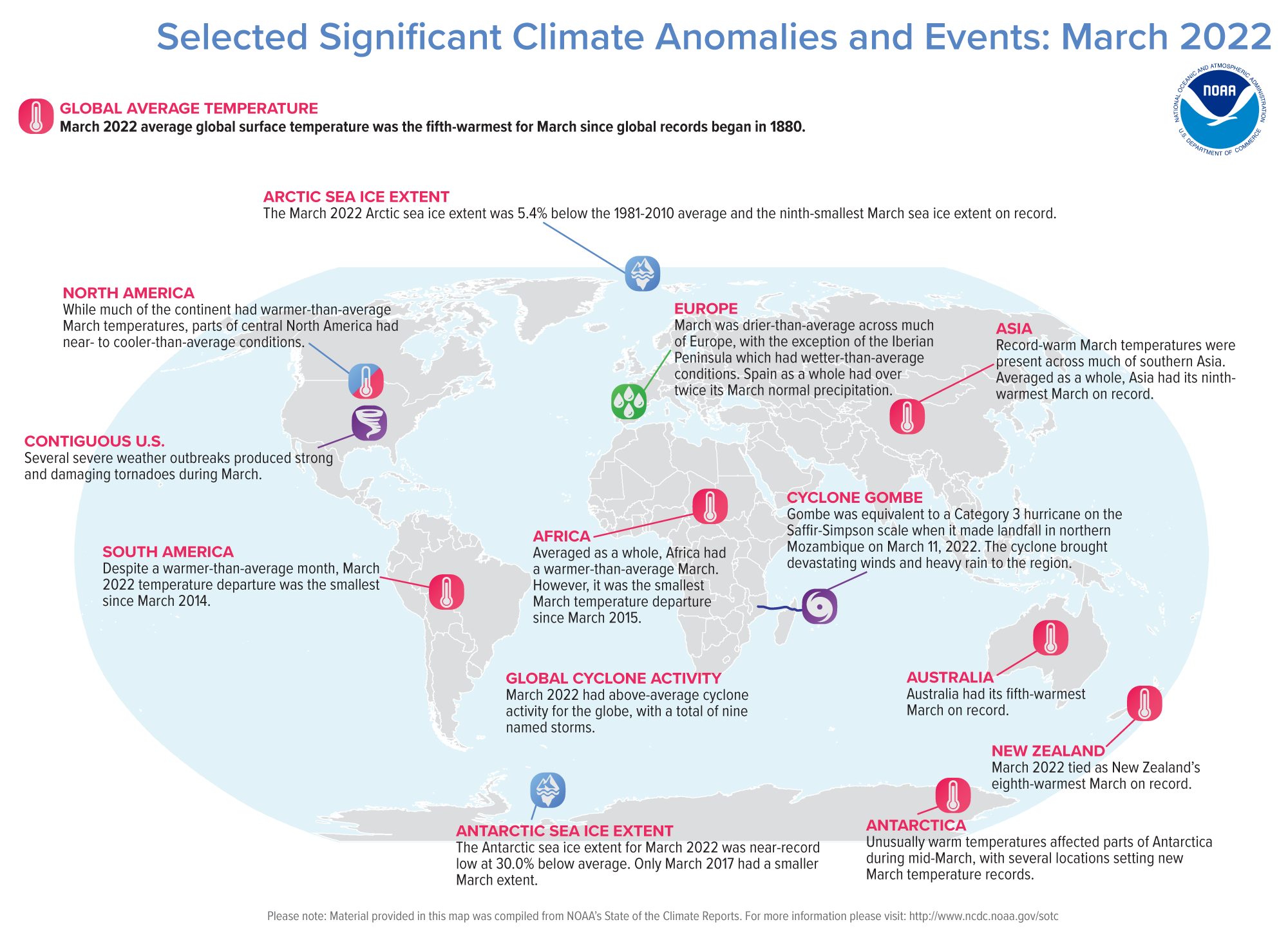
A collage of typical climate and weather-related events: floods, heatwaves, drought, hurricanes, wildfires and loss of glacial ice. (NOAA)
April 14, 2022 - March continued the planet’s exceedingly warm start to 2022, ranking as the fifth-warmest March in 143 years.
The year so far ranks as the fifth-warmest globally since 1880, according to scientists from NOAA’s National Centers for Environmental Information.
Below are more highlights from NOAA’s latest monthly global climate report:
Climate by the numbers
March 2022
The average global land and ocean-surface temperature for March was 1.71 degrees F (0.95 of a degree C) above the 20th-century average of 54.9 degrees (12.7 degrees C), ranking as the fifth-warmest March in the global climate record.
March 2022 also was the 46th consecutive March and the 447th consecutive month with temperatures above the 20th-century average.
Looking regionally, Oceania had its fourth-warmest March on record while Asia had its ninth-warmest. North America, South America, Europe and Africa all had above-average March temperatures, but none of the continents saw a top-15 warm March.
Year to date | January through March
For 2022 so far, the global land and ocean surface temperature averaged 1.58 degrees F (0.88 of a degree C), making it the fifth-warmest year to date on record.
Asia also had its fifth warmest year-to-date temperature on record, while South America, Europe, the Caribbean region and Oceania each saw a January-through-March temperature ranked among the nine warmest on record. Africa and North America also were warmer than average, but saw their coolest year to date since 2012 and 2014, respectively.

Other notable climate events in the March report
- Sea ice was scant at the poles: Antarctic sea ice coverage (extent) was just 1.09 million square miles, the second-smallest extent for March in the 44-year record. Only March of 2017 had a smaller sea ice extent. Across the Arctic, sea ice extent averaged 5.63 million square miles — the ninth-smallest for March since records began in 1979.
- A busy month for the tropics: Nine tropical storms formed globally in March, tying as the second-highest number of tropical storms in March — behind March of 1994 which had a total of 10. Only three of the nine tropical storms reached cyclone (hurricane) strength, which is below normal for the month.
More > Access NOAA’s latest climate report and download the images.
Source: NOAA
